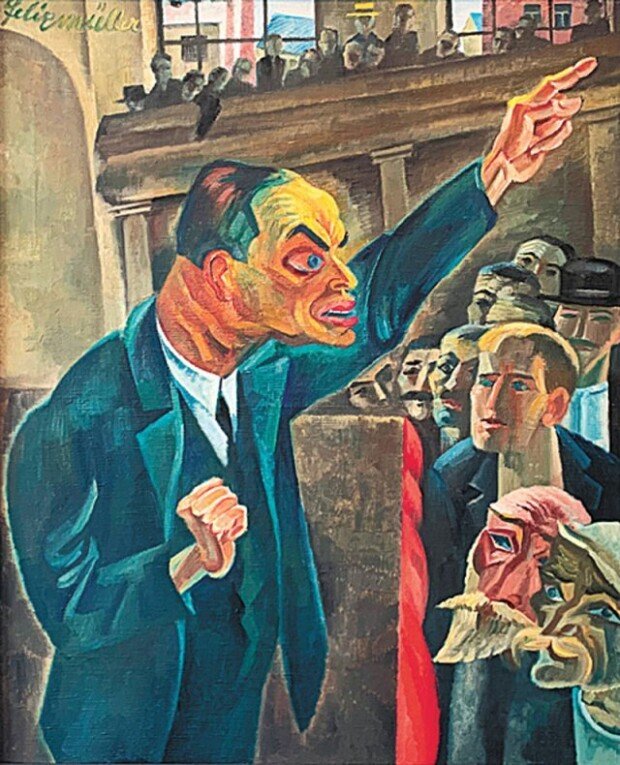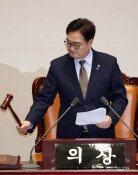Daughter of an activist leader
Daughter of an activist leader
Posted August. 25, 2022 07:58,
Updated August. 25, 2022 07:58

A man in a suit is making an impassioned speech in front of the audience. His left index finger is raised pointing to the sky and his right fist is clenched tight. His wide eyes are red and so are his ears. Who is this man and what is he saying to fill him with such emotions?
The man in the painting is Otto Rhle, a German revolutionist and communist. The once-teacher joined the Social Democratic Party of Germany at the age of 22 and began a political career. As a pacifist, he voted against World War I and left the party to establish the Independent Social Democratic Party in 1917 and the Communist Party of Germany later. He was critical of not only the corrupted Weimar Republic but also the communist party that became a ruling class. He argued that a revolution was not a matter of a political party and that the Lenin organization was a mere copy of the bourgeois society. As a convincing activist leader and speaker, he became the leader of leftist radicals of Dresden in 1917. The painting depicts Rhle delivering a speech in Dresden. Conrad Felixmuller who came from a working-class family in Dresden began his career as a professional painter at the age of 18 and joined the Germany communist party in 1919 as his interest in politics grew over time. He became a close friend to Rhle, which led him to paint this portrait. The 23-year-old painter depicted the 46-year-old politician as a passionate activist leader. The audience is listening to his speech with eyes filled with emotions. The painter later said that he was with Rhle in the famous site of storm with all his heart and soul.
It is natural to feel deep passion as a young person. Felixmuller painted the portraits of revolutionists with a sense of duty to record history. However, the Nazi regime said his paintings were degenerate and confiscated and destroyed 151 pieces made by him. The painting was one of them. While the painter kept distance from the political field afterwards, he reproduced the painting in 1946, three years after Rhle passed away. The painter might have wanted to remind himself of the passionate heart and words of the activist leader that he admired at young ages.







